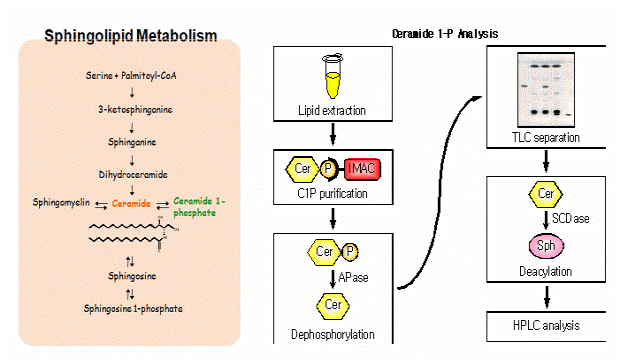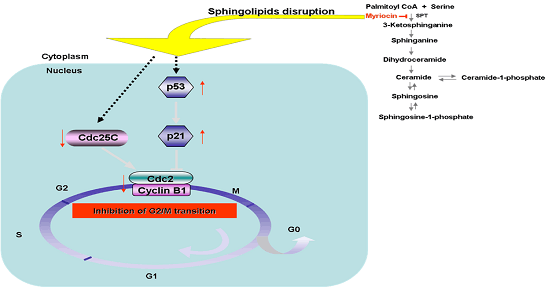- Sphingolipids?
Ceramide synthesis occurs in the endoplasmic reticulum, and is initiated by serine palmitoyltransferase, a pyridoxal 5-phosphate dependent enzyme, to produce 3-ketosphinganine which results from the condensation of serine and palmitoyl-CoA. Ceramide can be metabolized to glycosphingolipids by a glucosylceramide synthase. Sphingolipid turnover involves removal of the sugars by exoglycosidases and the phosphorylcholine of sphingomyelin by sphingomyelinase. After removal of the sphingolipid head group, Ceramide can be either reutilized for complex sphingolipid formation or undergo further breakdown processes. Ceramide at the C-1 position was phosphorylated by ceramide kinase to ceramide 1-phosphate.

- Adipocyte Differentiation
Adipocytes are a major site for energy storage (in the form of triglycerides) for use during periods of caloric insufficiency. Adipocyte differentiation has important implications for human diseases such as type II diabetes, hypertension and coronary heart disease. Ceramide and ceramide 1-phosphate, bioactive sphingolipids, are also implicated in diverse cellular processes such as differentiation, cell proliferation, apoptosis and inflammation.

- Antitumor Activity
Myriocin, antifungal metabolite, inhibits B16F10 melanoma cell proliferation without cytotoxicity via G2/M arrest and reduces the levels of sphingolipid metabolites. The myriocin inhibition of cell proliferation in the melanoma cells may occur by blocking the sphingolipid biosynthesis pathway and depleting sphingosine, ceramide and ceramide 1-phosphate.

국가
대한민국
소속기관
충북대학교 (학교)
연락처
책임자
유환수 yoohs@chungbuk.ac.kr


